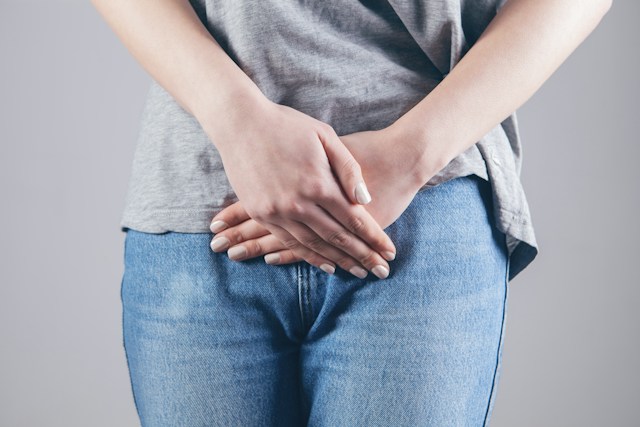Stress Urinary Incontinence (SUI), is an often debilitating condition that affects people, mostly women, all over the world. This condition refers to the unintentional release of urine during physical activities due to the stimulation pressure on the bladder. Although SUI is common, most people may not know much about the details of this condition. This article seeks to present a broad overview of Stress Urinary Incontinence in its basic description, causes, and management.
Understanding Stress Urinary Incontinence
Definition and Prevalence
Stress Urinary Incontinence is defined as the involuntary release of urine under physical or pressure stimuli on the bladder and on the urethra. Such activities contributing to SUI include coughing, sneesing, laughing, lifting heavy objects, or engaging in exercise. Although both males and females can be affected, it is more prevalent among women, especially during pregnancy, childbirth, and menopause. Studies have shown that the incidence of SUI rises with age, thus reducing individuals’ quality of life across several groups.
Lower Urinary Tract Anatomy
The understanding of the lower urinary tract anatomy enables us to understand the SUI mechanism. The bladder, urethra, and pelvic floor muscles have important roles. The bladder is the organ that holds urine, and the urethra disposes of it. The pelvic floor muscles hold the bladder and urethra in place, keeping them from leaking. This weakness results in SUI, and due to increased abdominal pressure urine flows out of the bladder.
Mechanism of Stress Urinary Incontinence
The main cause of SUI is the weakening and loss of support from the pelvic floor muscles. In activities that cause more abdominal pressure such as coughing or lifting, the compromised pelvic floor muscles are not sufficient enough to support the bladder and urethra. This leads to the involuntary loss of urine. Key determinants of muscle atrophy are childbirth, old age obesity, and hormonal imbalance.
Causes of Stress Urinary Incontinence
Pregnancy and Childbirth
Pregnancy and childbirth are arguably one of the most prevalent causes of SUI in women. Carrying a baby and the physical stress of childbirth itself can cause significant weakness in the pelvic floor muscles. Vaginal delivery particularly affects the nerves and supportive tissues in the pelvic area, leading to causes of SUI.

Aging and Hormonal Changes
Hormonal shifts, especially during menopause in women, can lead to reduced estrogen levels as they age. This drop may also cause the weakening of pelvic floor muscles and tissues that support the bladder and the urethra. The fact that older adults are a combination of aging and hormonal shifts increases their vulnerability to SUI.
Obesity and Lifestyle Factors
Being overweight can add pressure to the pelvic floor muscles thereby increasing the likelihood of SUI. Lifestyle factors such as poor diet and lack of exercise which contribute to obesity also cause muscle weakness. A good diet and an exercise plan can help to prevent SUI.
Chronic Conditions and Medications
Some chronic diseases, for instance, persistent coughing caused by respiratory illnesses or neurological conditions that disrupt bladder function can be a cause of SUI. Moreover, drugs that are associated with polyuria or muscle weakness may contribute to the phase of this disease.
Management and Treatment Options
Pelvic Floor Exercises (Kegel Exercises)
When it comes to self management of SUI, one of the first lines of treatment for SUI is pelvic floor exercises, commonly referred to as kegel exercises. This set of exercises includes working the pelvic floor muscles to increase their strength and reliability. Kegel exercises, if practiced regularly, can improve muscle tone and help in alleviating or eliminating SUI symptoms.
Lifestyle Modifications and Behavioral Therapies
SUI management is highly influenced by incorporating a healthy lifestyle. Stress relief on the pelvic floor muscles can be achieved through weight control by a balanced diet and regular exercise. Another important lifestyle modification for those with SUI is abstaining or stopping smoking as it leads to chronic coughing.
Behavioral treatment options, such as bladder training, may be useful in treating SUI. This consists of timed voiding to enhance bladder control and minimise the occurrence of urine incontinence. Fluid management, such as adequate hydration and limiting caffeine consumption, is usually advised to reduce symptoms.

Medical Interventions
In case of ineffectiveness of conservative management, medical procedures might be considered. This may include muscle-strengthening drugs or medication for underlying diseases associated with SUI. For more severe forms, surgical interventions such as use of the sling procedures or bladder neck suspension may have to be undertaken.
Advanced Therapies
Medical technology has resulted in newer and more efficient options for SUI, which include neuromodulation that stimulates the nerves associated with bladder functions as an alternative method for non-responsive patients.
SUI is a prevalent kind of urological disorder, it impacts the quality of life among those who have it. The understanding of the basics, factors, and options with which to handle them is essential for proper prevention as well as treatment together. This two-dimensional approach that emphasizes sustainability could help individuals get back control and achieve a happy life despite the SUI. Continued research, awareness, and medical breakthroughs are the definitive determining factors that define SUI treatment.



